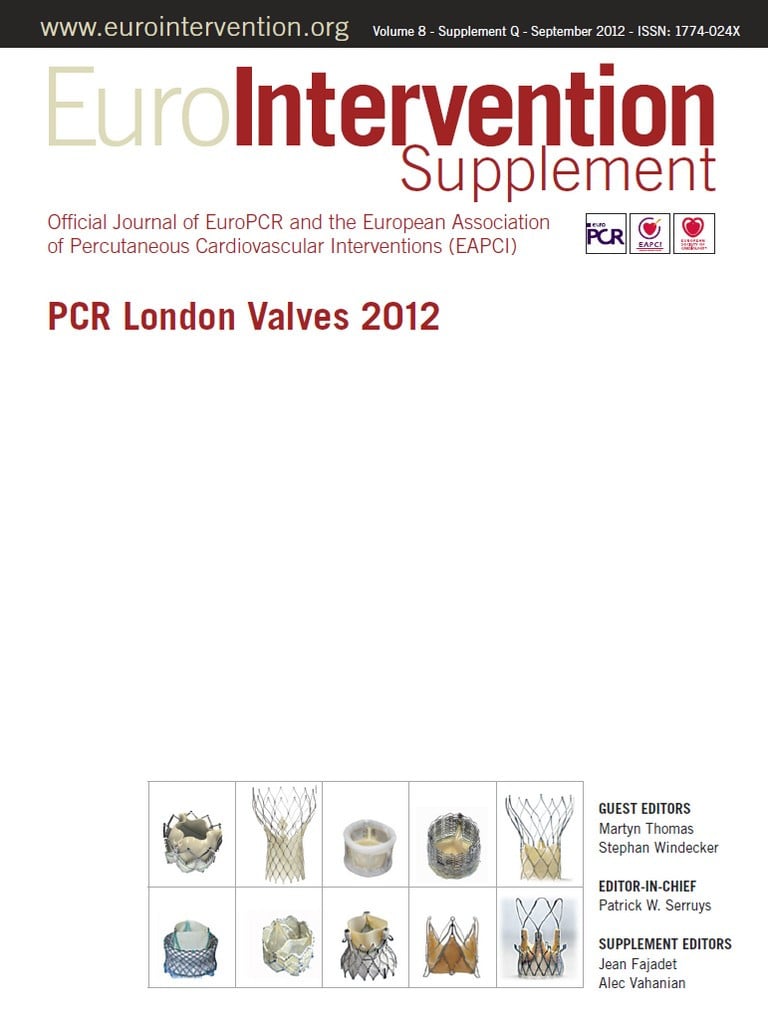![]()
Transcatheter therapies in patients with mitral regurgitation or poor left ventricular function
Prognostic implications of moderate and severe mitral regurgitation in contemporary clinical care
Aims: The impact of surgical or percutaneous mitral valve repair in patients with severe mitral regurgitation (MR), particularly with significant left ventricular dysfunction (LVD) and comorbidities is difficult to predict. We examined the long-term prognostic impact of severe MR and the putative benefits of surgical or device therapy.
Methods and results: This was a case control study. From a single-centre echocardiographic database, 432 patients were identified and matched in a 1:1 fashion adjusting for age, gender, LV function and echocardiogram date. Two hundred and sixteen patients had moderate to severe MR while 216 patients had none or mild MR. Baseline clinical and echocardiographic characteristics were compared between both groups. The association between significant MR and event-free survival was plotted using Kaplan-Meier methods. To estimate the average number of years lost due to MR and the putative years gained through mitral valve repair, 15-year outcomes were predicted using the Royston-Parmer survival model. The years of life lost due to moderate or severe MR was estimated by the median life expectancy of patients with MR compared with patients of similar age and LV function without MR. Both groups were well matched for age, gender, LV function, ischaemic heart disease, hypertension and diabetes. Moderate or severe MR was associated with more atrial fibrillation (no/mild MR: 30.7% vs. moderate/severe MR:51.6%, p<0.001) and heart failure (13.2% vs. 27.9%, p<0.001). Significant MR was not associated with increased rate of death at 30 days (6.0% vs. 9.3%, p=0.13), but was associated with increased 12-month and overall mortality (18% vs. 31%, p=0.012 and 35.6% vs. 46.4%, p=0.015 respectively). There was also a higher rate of 12-month and overall rehospitalisation for heart failure in the MR group (18.5% vs. 23.1%, p=0.013 and 8.8% vs. 17.1%, p=0.007 respectively). Cox proportional hazard analysis demonstrated increased risk of death with significant MR (hazard ratio [HR] 1.66; 95% confidence interval [CI] 1.04-2.62, p=0.031), ejection fraction <30% (HR;1.61; 95% CI; 1.03-2.16, p=0.039), COPD (HR 1.95; CI 1.35-2.85, p<0.001) and renal dysfunction (HR 2.11; CI 1.45-3.07, p<0.001). Royston-Parmer plots were well matched with observed mortality from this and published studies over 12-month periods. A Royston-Parmer plot of 65-year-olds with normal LV function and severe MR predicted a median survival of 4.87 years with the potential to gain 1.6 life-years over 15 years following surgical intervention of MR. Royston-Parmer plots of 70-year-olds with severe MR, LVD and renal dysfunction predicted a median survival of 2.6 years with the potential to gain 1.0 life-year.
Conclusions: Mitral regurgitation remains undertreated and is associated with independent prognostic significance. The Royston-Parmer model represents a potentially useful risk stratification tool, which may have significant implications for patient selection and funding discussions for the future application of novel devices for the treatment of MR.

